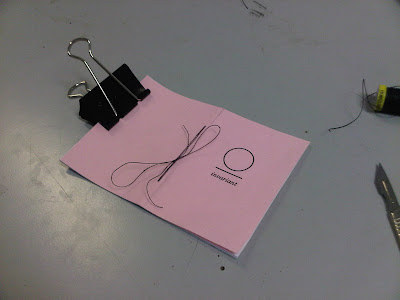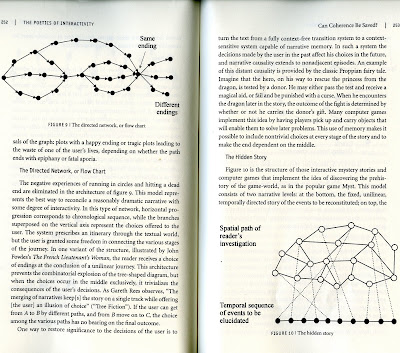I want the content of my book to reflect the concepts I've been looking at, in particular the idea of self-similarity and being able to 'see' the forms that self-similarity takes. The idea is that through the plethora of numbers and equations, non-mathematicians like myself and I imagine most people who will see my book, simple artistic forms can help us understand what all the science and maths means. I chose to use a book called 'Thermodynamics and Physics of Matter', edited by F.D. Rossini, as the background, the actual text on the pages is of no particular importance but more, the presence of that book within my book is important. First of all it is a first edition, and therefore
valuable as a collectors item,
I found it while hunting through books in Oxfam. Second of all it covers an incredibly lucid subject, the concepts of matter, turbulence etc. are not strictly
visible to us without some form of simple geometric diagram to help aide not only someone who has no understanding of the subject but also an aspiring physicists' understanding. Lastly, most pages are covered in long lists of equations, some that I've tried to get my head round but my brain clearly doesn't think that way. Basically out of a number of days looking through charity shops and little independent book stores this seemed the most appropriate to use as it covers so many of the concepts I've been looking at.

In relation to this I wanted to use my understanding of the most simple, regular polygons as a visual element, with regards to Mandelbrot's concept of invariance (see post on fractals). I've been working with Illustrator using simple mathematics to make sure my shapes were completely centered before repeatedly duplicating and resizing them, I chose squares, triangles and pentagons as they are the only shapes that fit together filling the plane completely, and form the unified platonic solids.
So this should hopefully come together easy enough in InDesign, and I'm also hoping that it reflects my ideas successfully. In order to kind of increase the success of the communication of my concepts I thought it would be a good idea to put a quote in the beginning that would gain an initial engagement of my audiences understanding of the ideas in my work.















































